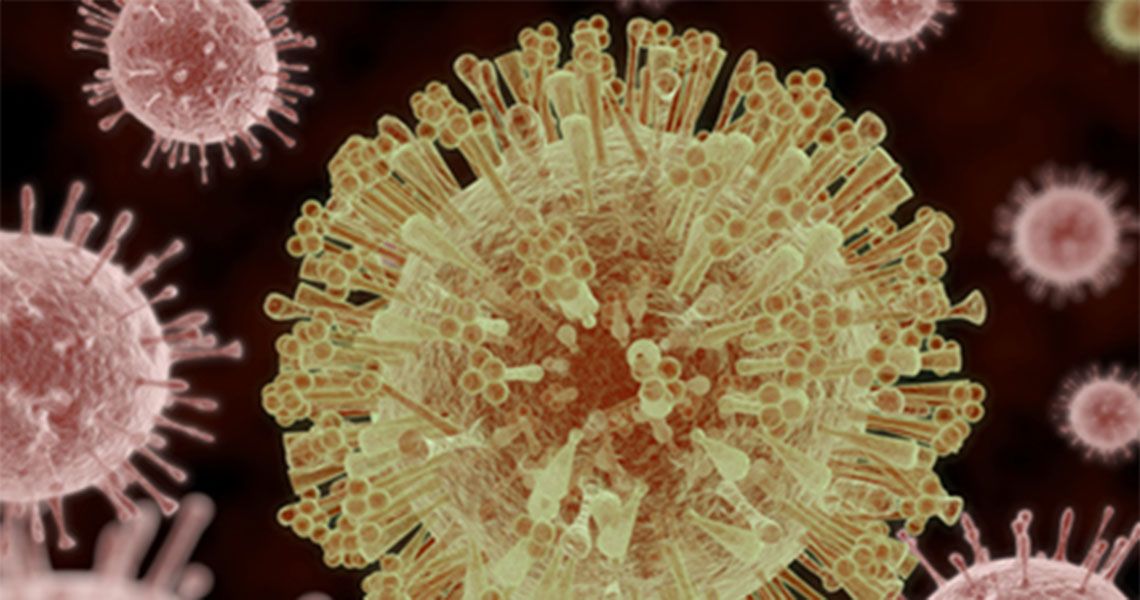Epidemiologist Tiana Garrett, Ph.D., M.P.H., was working for the U.S. Department of Homeland Security, conducting open-source research when a colleague presented her with an article on ProMed, a reporting system for potential outbreaks of emerging diseases. The subject line was “Undiagnosed illness, Caxias, Brazil.”
“We had never heard of this undiagnosed disease,” Garrett recalled at the Sept. 12 lecture, sponsored by the GW School of Medicine and Health Sciences’ (SMHS) Community/Urban Health scholarly concentration and the Infectious Diseases Student Interest Group. “This was February 2015, and there really wasn’t a lot of information about this unknown disease. A couple of things we did know were that it was a disease that was affecting individuals in Brazil; we knew that it was a viral disease; and it was causing symptoms similar to what we would see with chikungunya or dengue (fever, rash, joint pain, muscle pain, vomiting).”
By May 2015, she said, researchers had not only determined that the unknown disease was “Zika,” but they had also confirmed the cases in Brazil were Zika, which had been initially classified as a “new virus.”
“Come to find out,” Garrett said, “it wasn’t really that new.”
As she explained to the SMHS students in the M.D. and physician assistant programs, the Zika virus traces back to the late 1940s, when it was discovered in the Zika Forest in Uganda, Africa. Isolated outbreaks subsequently occurred in Africa, Asia, and the South Pacific, and since its discovery, the virus has evolved into two different strains, one of African origin and one of Asian origin. The virus continued to spread over the years, though little media attention was paid to it until 2007, when an outbreak in Micronesia and the Yap Islands started to get notice. In 2013, Zika virus cases were found in French Polynesia, and in 2014, Brazil experienced the outbreak that has since gained significant coverage.
Zika virus is spread through the bite of an infected Aedes species mosquito, mainly Aedes aegypti, and to a lesser extent, Aedes albopictus. In an urban environment, Garrett explained, the virus takes on an epidemic cycle, passing from mosquito to person to mosquito. It also can be transmitted vertically through pregnancy and sexually, from males to females, females to males, and males to males. There has even been at least one case of accidental exposure in a laboratory setting.
“Right now, what the [Centers for Disease Control and Prevention (CDC)] are stating is that mosquito-borne transmission is the primary way to spread the virus,” Garrett said. “[That’s] because it’s difficult to tease out right now how big a role sex may play in the transmission of this virus and may have played in previous outbreaks.”
What researchers do know is that the virus can bide time in bodily fluids. Based on recent scientific studies, Zika virus has been found to survive in blood serum for at least seven days; breast milk for four; cervical mucus for 11; saliva for 79; semen for 188; and urine for 29 days. Plausible ways of transmission, Garrett added, are through blood transfusions, organ or tissue transplants, fertility treatments, particularly with egg and semen donations, and breastfeeding; however, she said, to date, there have been no confirmed Zika virus cases through these plausible transmission routes. The virus is also largely asymptomatic – only 20 percent of those infected experience symptoms – and what symptoms there are subside within a week.
In fall 2015, a letter published in ProMed introduced what has become a critical outcome of Zika virus infection. “This is a letter from someone who is living in Brazil at the time, and he was concerned because his pregnant wife had been infected with Zika virus,” Garrett said. “Then they found out that their daughter had microcephaly through ultrasound.” The letter writer, after noticing other pregnant women infected with the virus had similar experiences, began talking with the members of his community. He discovered what seemed to be a pattern and alerted authorities.
“This is as boots on the ground as you can get,” Garrett said. “I don’t know what this person’s background was, but they knew enough to contact ProMed.”
Microcephaly, or infants born with abnormally small heads, as well as Guillain-Barré Syndrome, an autoimmune disorder, are now linked with the virus, and in April, the CDC released a report acknowledging the causality, which was, Garrett said, “a really big deal.”
“Instead of just saying ‘microcephaly’ or ‘birth defects,’ now the CDC is calling the composite of these different issues ‘Congenital Zika Syndrome,’” she said.
The current outbreak in the United States, which up until recently involved travel-related cases, has been concentrated in Miami-Dade County in Florida, with independent cases in Miami Beach and the Wynwood area. Predicted hot spots are major cities along the southern and eastern stretches of the continental United States, and while there are response plans in place, Garrett explained that the spread of the virus from Brazil, through Mexico, to Florida, and farther north was “just a matter of time.”
As of now, she added, there are no treatment options, though multiple vaccines are under development, and those at risk for Zika, such as pregnant women, can get tested at CDC-approved labs. Additionally, everyone, she said, should try to prevent mosquito bites, with guidance from the D.C. Department of Health “Fight the Bite” campaign.



